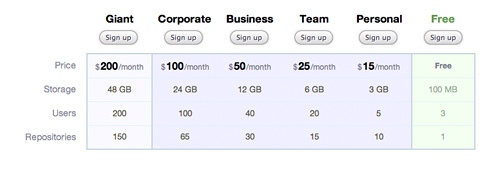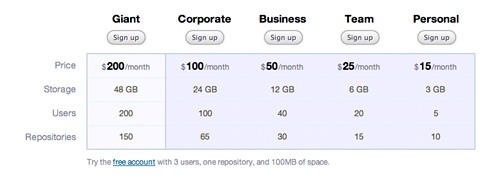Some of you may have noticed that I was once running the customer side of Newsberry, our email marketing service. In the last few months, my role at Wildbit has shifted a bit to incorporate more "business development-esque" tasks such as tracking our site performance and customer interaction across all of our products. My kickoff post is on an experiment we ran to see if we could increase our conversion rates.
The Free Plan Experiment
We've always really loved the fact that we can give some form of our products away for free, so people can try them and see how they work. That said, as any product company, we're always looking to increase our conversions from free to paid plans. We recently did an experiment (on a small scale) using a few different pricing pages to see if we could convert some more people to purchase a paid plan.
We set out to answer two questions:
- Do people only sign up for free plans, and if given no free plan option, would they sign up at all?
- Do people sign up for a free plan because it is easy and available, but are just as inclined to jump into a paying plan if given enough information and incentive? These people, would sign up for a paying plan even if no free option existed.
Setting up the Experiment
Our design team came up with two pages. The first was similar to what was already in place, offering up the free plan right next to all the paying plan options.

The second page took out the free plan from the plan options matrix, and offered it at the bottom. This way, displaying it as more of a trial option, not a full feature plan.

For both pages we wanted to make sure that we provided enough of the relevant information that a person needs when choosing to sign up for a service. We listed the major features, making sure to highlight those that are only offered for the paid plans. We also highlight one of our biggest strengths (based on what customers have identified) which is the other services we integrate with.
We ran the free plan page for 8 weeks, and then the new pricing page for another 8 weeks. We tracked:
- Total Signups to Beanstalk
- Total Signups to a Paid Plan (and to a free plan)
- Upgrades from the free plan
- Total traffic to the site (to make sure inconsistent traffic didn't skew results)
Results
Well, before we took on this little experiment, we did some reading on other apps, and it seems like most found that this type of move had positive results on revenue. So, when we set out, we assumed the same. Happily, the results were better than we could have expected.
Most importantly, our conversion rate of Total Signups to Paid Plans went from 9.9% to 12.4%! Here are some more stats:
- Total signups to Beanstalk decreased about 2%
- Total signups to a paid plan increased 54%
- Traffic remained consistent throughout the 16 weeks
- Upgrades increased about 7%
Now, there is a lot of ways to look at this data, but I think every conclusion will be the same: People will pay right at the beginning given the right incentive and enough information. The free plans, for most people, are just an easy way to sign up, maybe so they don't have to commit and think too much about making a decision.
That said, the decrease in signups is not something to overlook. We have a few theories on this, one being that those 2% were probably not interested in ever using the site or paying. They may have just wanted to check us out, and when the free plan wasn't so obvious, they left. Another is that people may have honestly not seen the free plan option, and went to a competitor where one was available.
Conclusion
We will be keeping our new pricing page. The short term plan is to continue to edit it, providing more helpful information on the product to help make the decision . Long term, we'll continue to monitor the results to see if any changes occur. We're by no means scientists, so we'll just keep watching and adjusting as we go. We have also discussed doing more A/B testing, so we could test in the same timeframe. That could probably decrease the variance, but we're pretty happy with the environment from these results.

